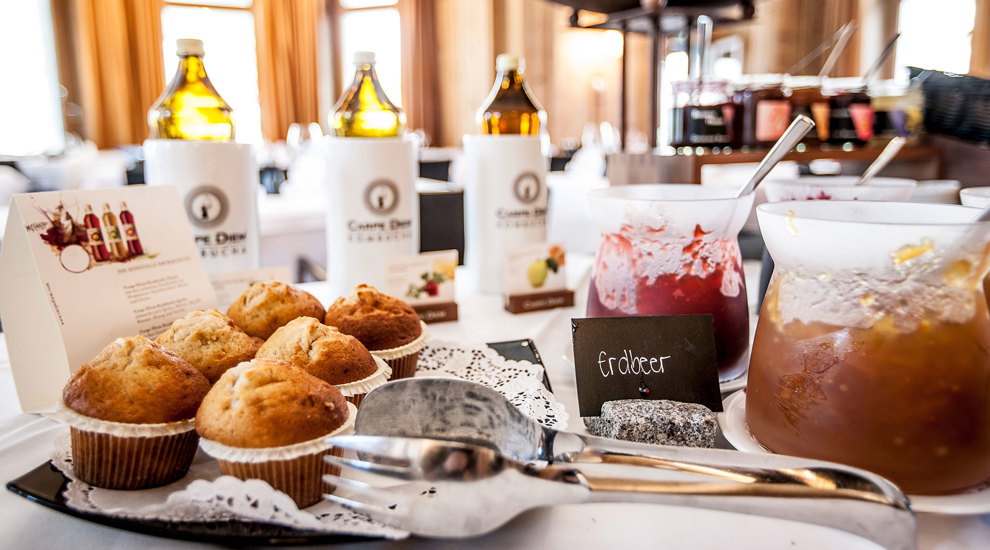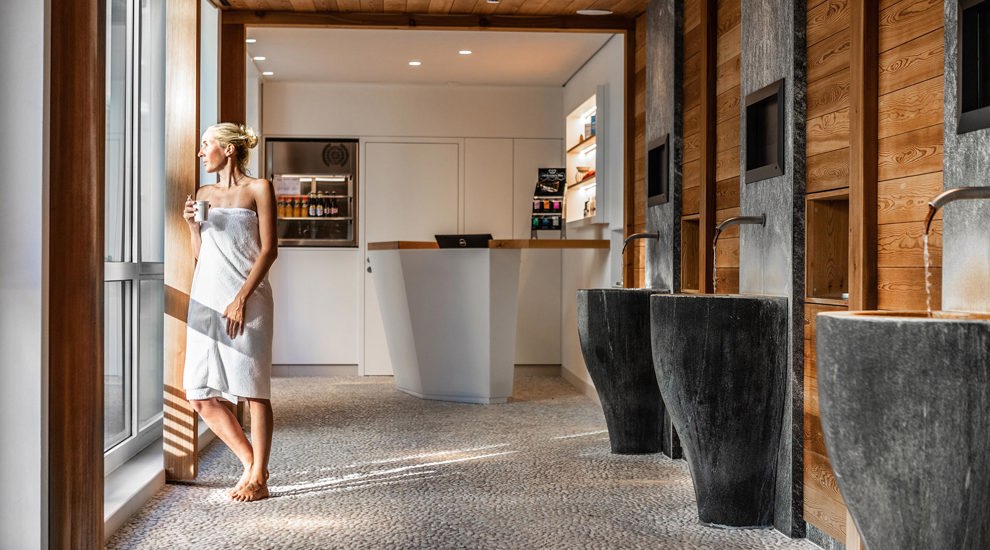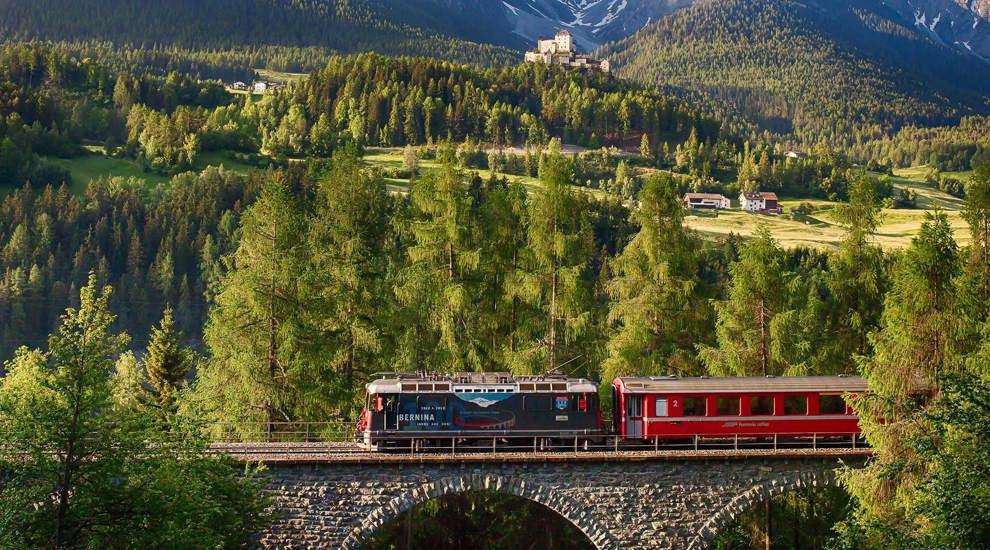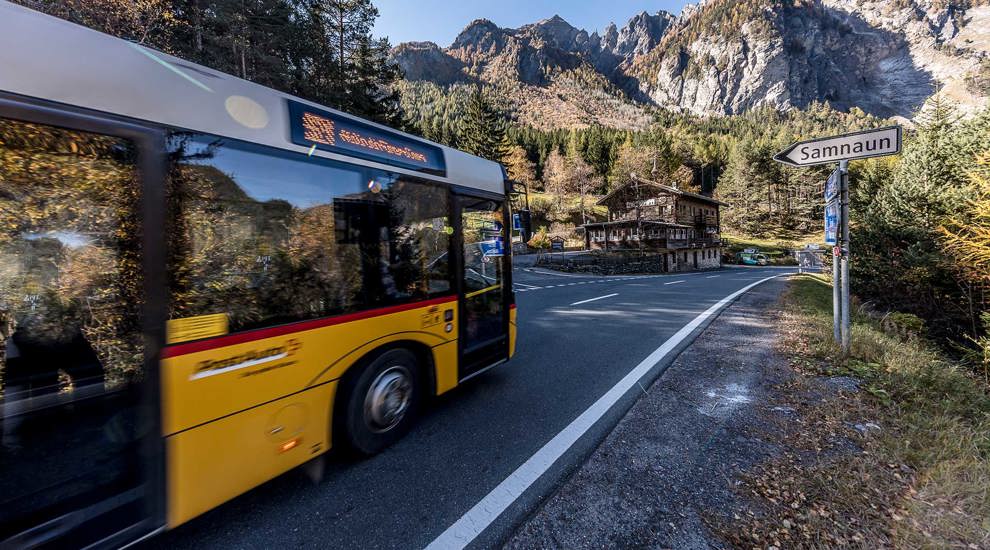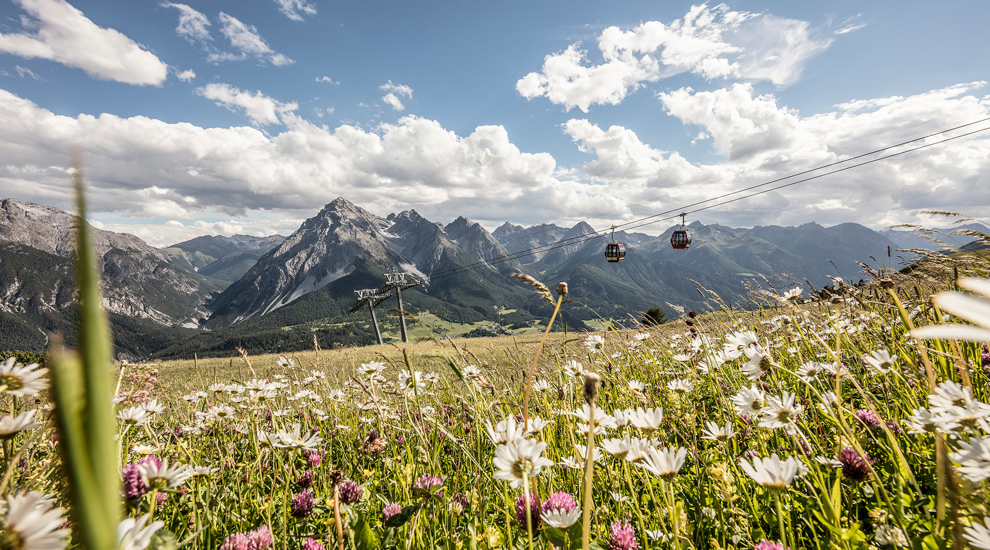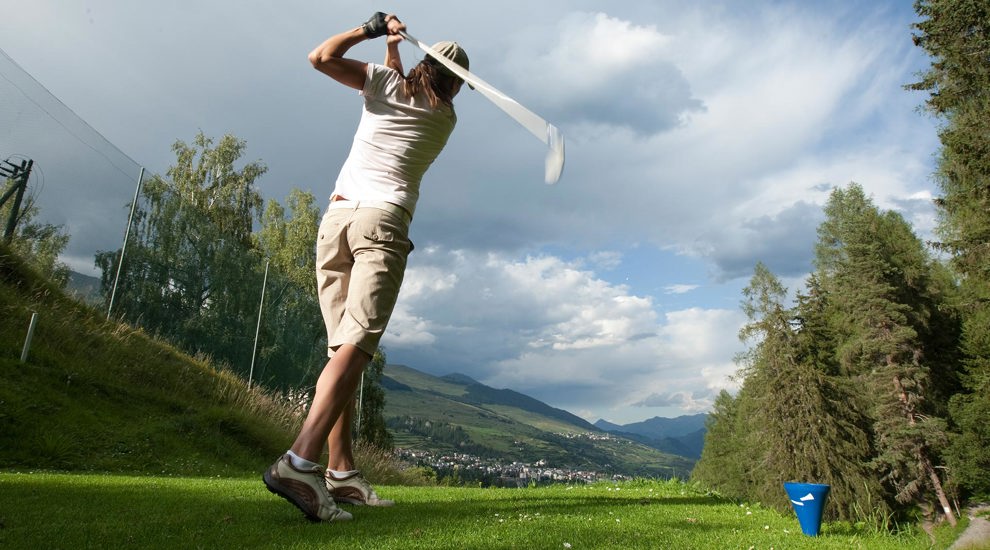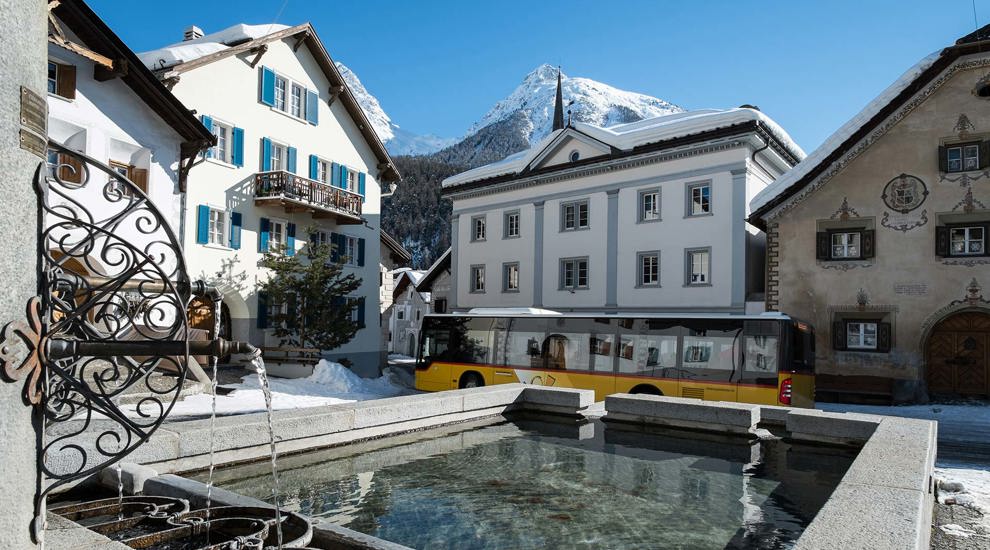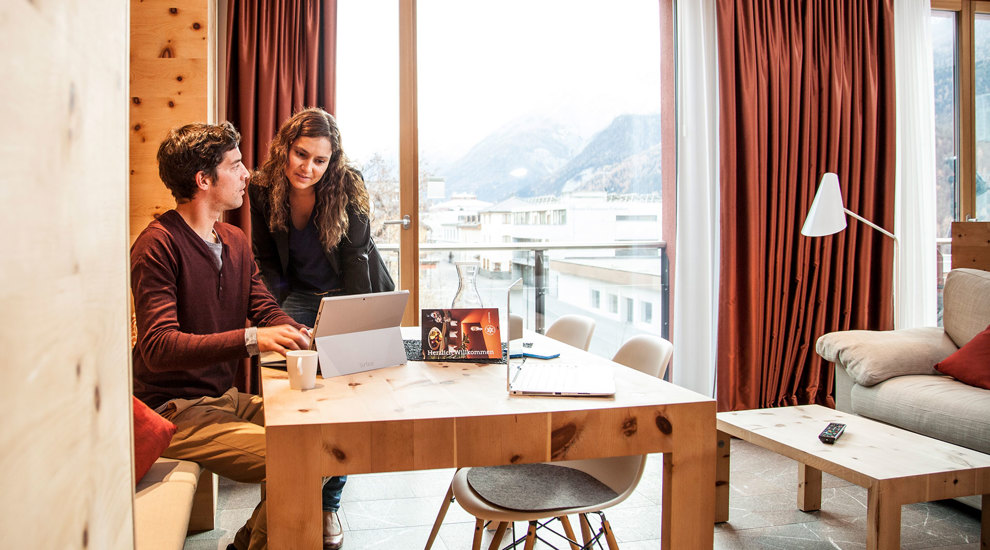Preserving our cultural heritage
Tap water for the preservation of the «Büvetta Tarasp»
Water as a remedy laid the foundations for tourism in the Lower Engadine. The highly mineralised mineral springs were used very early on and became world famous during the Belle Epoque. An entire spa resort was built in Tarasp Nairs, including a luxurious spa centre with a villa as an annexe, a pump house, bathhouse, English church, post and telegraph office, post horse-drawn carriages, bowling alley, tennis courts and small shops.
The Büvetta Tarasp is an architectural jewel from the heyday of spa tourism towards the end of the 19th century. Architect Bernhard Simon, who worked in St. Petersburg in Russia and later throughout Switzerland, particularly in Bad Ragaz, designed the drinking hall as well as the annex to the Tarasp Kurhaus. The long drinking hall building was constructed in 1875/76 - at the same time as the Hotel Belvedere.
The rotunda, crowned with a large dome, is where the water from the Bonifacius, Lucius and Emerita mineral springs is dispensed. A few steps lead up to the wood-panelled foyer. Here, on the hillside, you will find the alcove where the spa orchestra used to play and a row of shops selling all kinds of goods. So while the mineral water worked its magic during a leisurely stroll, the spa guests were well entertained. Despite a purifying renovation in 1963, during which the pump room was boarded over, the pump house has been largely preserved over the decades. The building was mainly affected by the ingress of moisture, salt efflorescence and the shifting terrain around it.
The Büvetta Tarasp is the only preserved pump house in Switzerland, which is why the «Pro Büvetta Tarasp» association has set itself the goal of protecting and preserving this architectural jewel and place of power and putting it to a new use. It is to become a place where science, culture and tourism merge.
Preserving and restoring the listed building involves many hurdles, especially in terms of financing. That is why we are also supporting this project with the proceeds from the sale of tap water. Part of the price of a carafe of tap water is channelled into this project so that future generations can also experience this valuable cultural asset.








